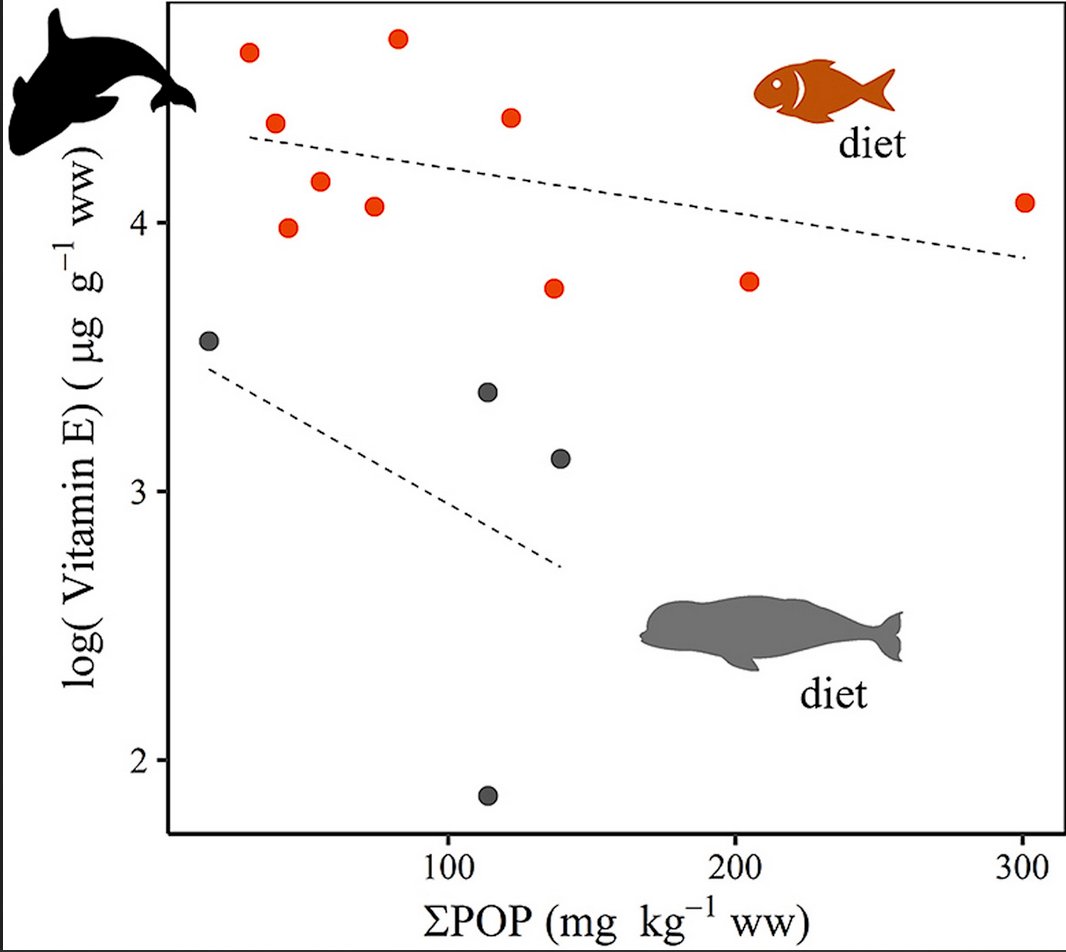Are vitamins A and E associated with persistent organic pollutants and fatty acids in the blubber of highly contaminated killer whales (Orcinus orca) from Greenland?
New publication by S. Pedro, R. Dietz, C. Sonne, A. Rosing-Asvid, M. Hansen, M.A. McKinney

Abstract
We quantified blubber concentrations of vitamins A (retinol) and E (α-tocopherol) and evaluated associations with persistent organic pollutants (ΣPOPs) in 14 highly-contaminated killer whales (Orcinus orca) sampled in Greenland from 2012 to 2014. We considered the influence of blubber depth, sex/age class and diet (based on biomass % of major fatty acids) in these relationships. Blubber concentrations of vitamin A averaged 34.1 ± 4.7 μg g−1 wet weight (ww) and vitamin E averaged 35.6 ± 4.4 μg g−1 ww. Although overall vitamin A concentrations did not vary between inner (closer to the muscle) and outer (closer to the skin) blubber layer or between sub-adults and adult females, concentrations in the outer layer of sub-adults were lower compared to the outer layer of adult females (p = 0.03). Outer layer may therefore reflect age accumulation of vitamin A, while in the more active inner layer, age effects might be masked by metabolic needs such as lactation. Neither diet nor ΣPOPs affected vitamin A variation, suggesting this vitamin is highly regulated in the body. Given the high exposures in these killer whales, vitamin A might not be a sensitive biomarker for POPs adverse effects. Vitamin E concentrations were significantly higher in inner compared to outer layer (p < 0.001), likely associated with blubber composition, suggesting that biopsies may not fully represent vitamin E concentrations in blubber. Age-accumulation of vitamin E also occurred with higher concentrations in adult females compared to sub-adults, independent of blubber depth (p < 0.01). Diet, ΣPOPs, and an interaction between these two variables significantly affected vitamin E variation in inner blubber, explaining 91% of this variation. The negative relationship between ΣPOPs (especially Σdichlorodiphenyltrichloroethane (DDT) and Σchlordanes in outer layers) and vitamin E was observed only in killer whales with a diet poorer in polyunsaturated fatty acids, suggested that killer whales feeding more consistently on marine mammals in Arctic environments over a fish-based diet, may be at higher risk of POP-induced disruption in vitamin E homeostasis. Considering diet is therefore important to understand the potential effects of elevated contaminant exposures on levels of certain essential nutrients, i.e., vitamin E, in killer whales.
